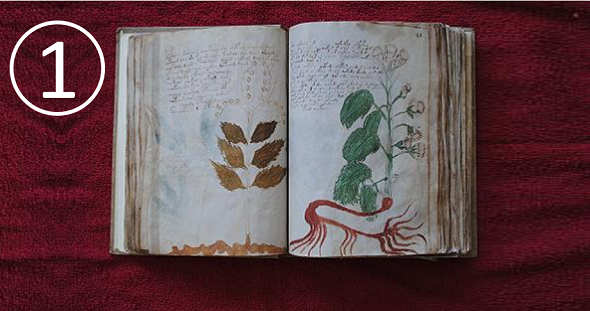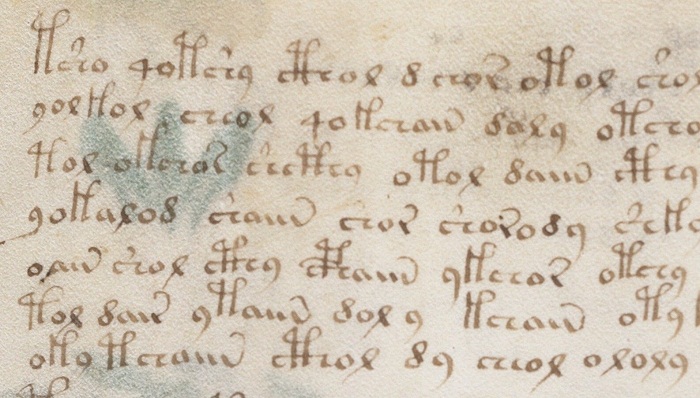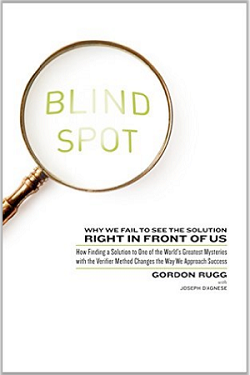British professor Gordon Rugg believes the text in the Voynich manuscript is a meaningless letter sequence created with a simple “table and grille” method. Voynich manuscript expert Nick Pelling called this theory a “quasi-academic nonsense that only an idiot would be convinced by”. Here’s my summary of this debate.
Part 1 | Part 2 | Part 3
The Voynich manuscript is the most popular unsolved cryptogram in the world. This 230 pages hand-crafted book is written in a script otherwise unknown. The text of the Voynich manuscript could be encrypted, written in an unknown writing system or just be nonsense. Several dozens of text examinations conducted by cryptanalysts and other scholars have not led to a solution of the mystery.
Much has been published about the Voynich manuscript. Many of these publications are mere nonsense. At least 40 Voynich manuscript scholars claimed to have decrypted the text, but none of these “solutions” has ever gained acceptance in the community. On the other hand, there are serious research papers, too. Some of these have been published in the peer-reviewed scientific magazine Cryptologia.
Gordon Rugg’s “Blind Spot”
In 2004, a Cryptologia paper written by British academic Gordon Rugg from Keele University caused a stir. Born in Scotland, Gordon has degrees in French and Linguistics and a PhD in Psychology. Gordon’s research focus is on techniques for solving complicated problems. He has written a fascinating book named “Blind Spot”, subtitled “Why We Fail to See the Solution Right in Front of Us”. I can only recommend reading it.
Most of all, I like the back of the book, where my name is mentioned 😉
“Blind Spot” exposes the ways in which all people tend to make the same sorts of mistakes, regardless of what field they are in. In addition, Gordon introduces a universal problem solution strategy he calls “Verifier”. One of the messages in “Blind Spot” can be summarized as follows: If you can’t answer a question, though you try really hard, you should check if it is the right question you ask.
I recently visited Gordon Rugg at Keele University near Birmingham. We talked about his book and about the Voynich manuscript. It was a most interesting conversation.
When Gordon was looking for problems that fit to his Verifyer method, he came across the Voynich manuscript. The question cryptologists usually ask about the Voynich manuscript is: “How can the Voynich manuscript text be decrypted?”. Gordon came to the conclusion that this was the wrong question to ask and that the correct one should be: “Can the Voynich manuscript be decrypted at all, and if no, how was the text created?”
Of course, the idea that the Voynich manuscript contains only meaningless gibberish was all but new. However, it is difficult to explain how somebody could produce a false (i.e. meaningless) text that looks like a real one (i.e., that shares many statistical properties with real language). Humans are very bad at producing completely meaningless letter sequences. If asked to try, most people will sooner or later start to write meaningful words or produce repeating patterns. As far as we can tell today, the Voynich manuscript text contains neither the one nor the other.
As a part of his Verifier method, Gordon Rugg asked himself whether there was a method to produce meaningless letter sequences that resemble the text in the Voynich manuscript. This method needed to be fast and simple enough to fill 230 pages with reasonable effort, and it had to be based on techniques already available centuries ago. This method, if it existed, represented the “blind spot” in the search for the origin of the text in the Voynich manuscript.







Kommentare (41)